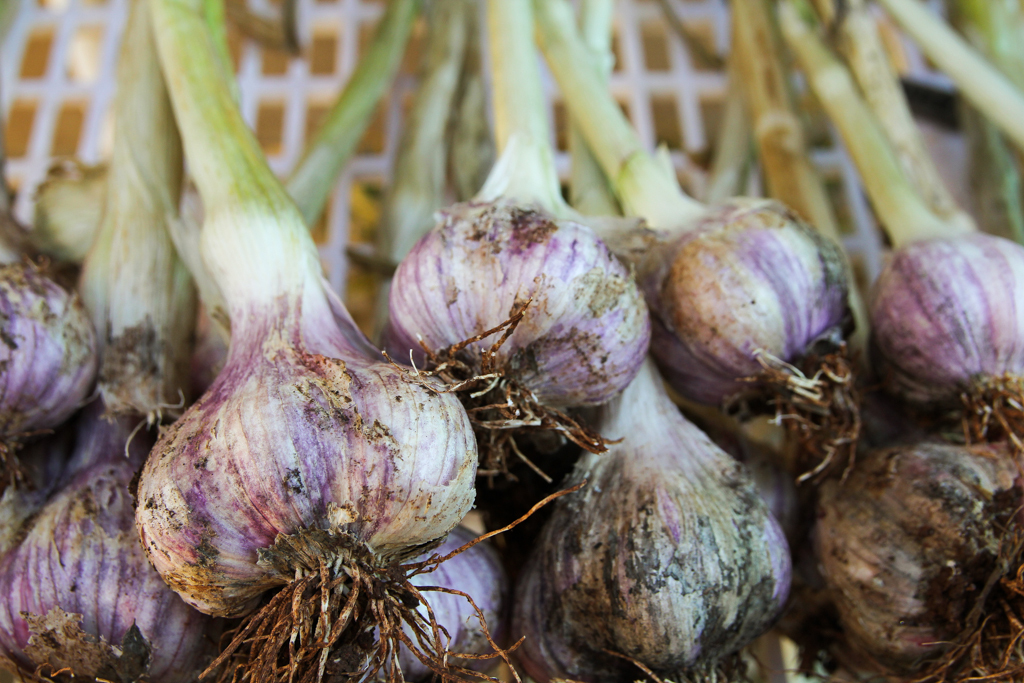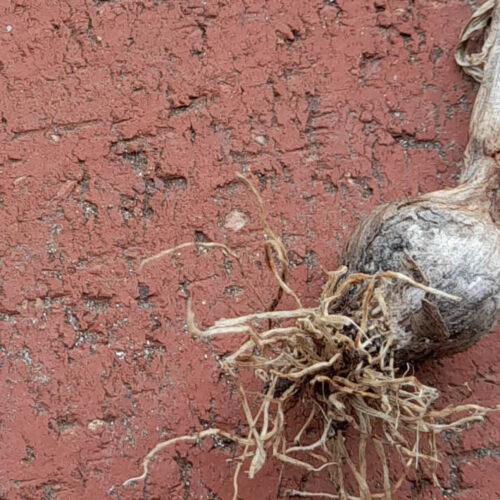Garlic harvest begins
2013-10-15T01:23:26+11:00
Much to his neighbours suprise, JUSTIN RUSSELL starts harvesting the first of his garlic bulbs. Check out his tips on knowing when the time’s right.
My first garlic bulbs of spring have been harvested and are now curing on racks in a dry shed. Considering the awful weather we’ve had the last few months – stinking hot and windy – the bulbs are plump and well formed. Just the way I like them.
Other gardeners in my neck of the woods are surprised to hear I’ve started harvesting so early. November is garlic harvesting month, they tell me, and for the most part they’re correct. Most varieties planted in mid-autumn are generally pulled from the soil in late spring. But emphasis needs to be put on the word generally.
In the real world, various factors come into play. Variety is one. Some garlic cultivars are “earlies”, meaning that they they are harvested relatively early in the season. The day length neutral varieties Southern Glen and Glen Large fall into this group, while some of the hard neck varieties mature later in the season. Other influences include rainfall (or lack thereof), temperature, and the amount of available nutrients in the soil. In my experience garlic grown in rich, just-moist soil tends to be ready later than that grown in poor soil.
The question is, therefore, when do you harvest? One method is to count the number of lower leaves as they dry off and die. These form the papery wrappers that protect the garlic bulb, and I like to wait until at least four leaves have died before harvesting.
A more reliable method is to have a poke around in the soil. Scratch a bit away around the stem of the garlic until you locate the bulb. If it seems to be fat and large, it’s probably time to harvest. Pull a couple of bulbs to make sure, then if the timing’s right, pull the lot.
One word of warning. Don’t err too much on the side of caution. Harvesting garlic too late in the season is as bad as harvesting too early. Old bulbs can rot, some tend to split open, and others start forming “daughter bulbs” on the outside of the main bulb. Use some common sense, trust your instincts, and above all, cure and store the bulbs properly to ensure a reliable supply for month’s on end.






